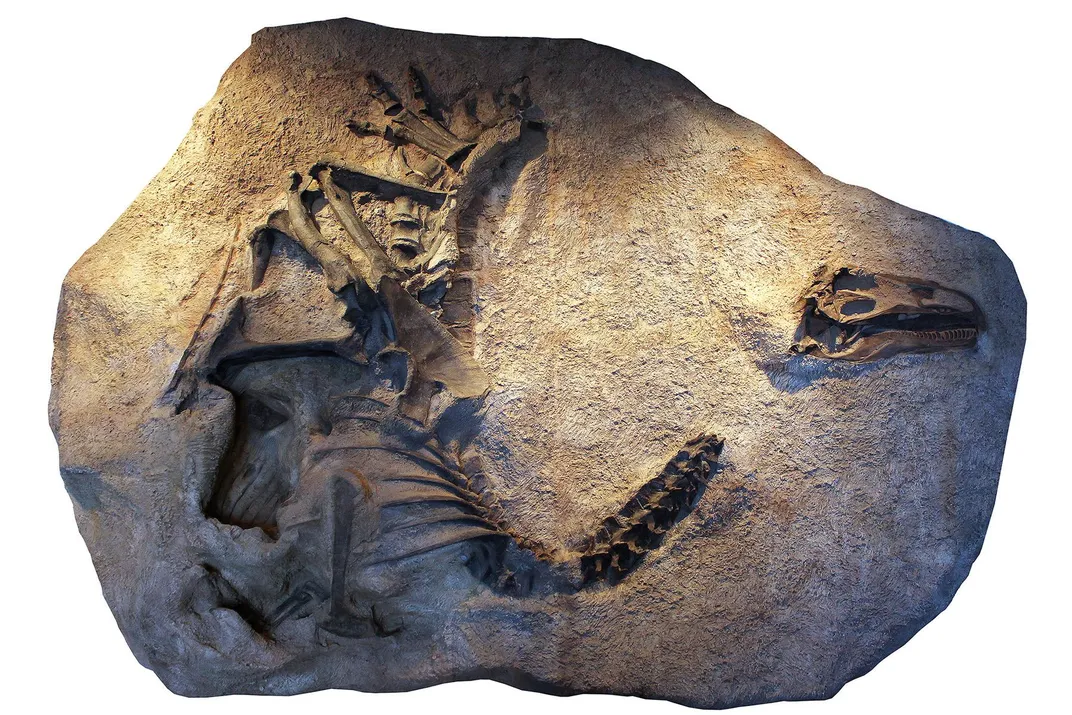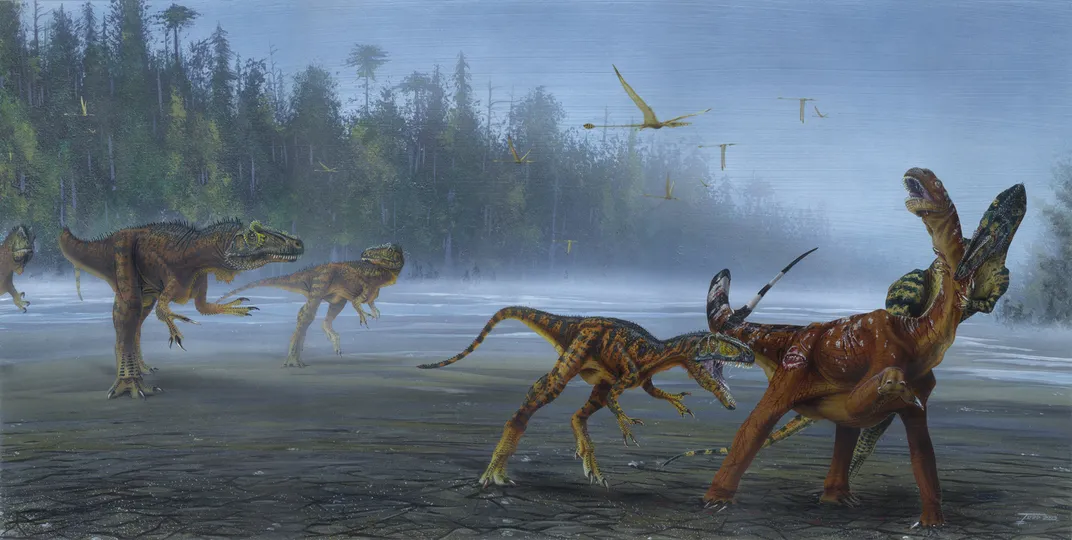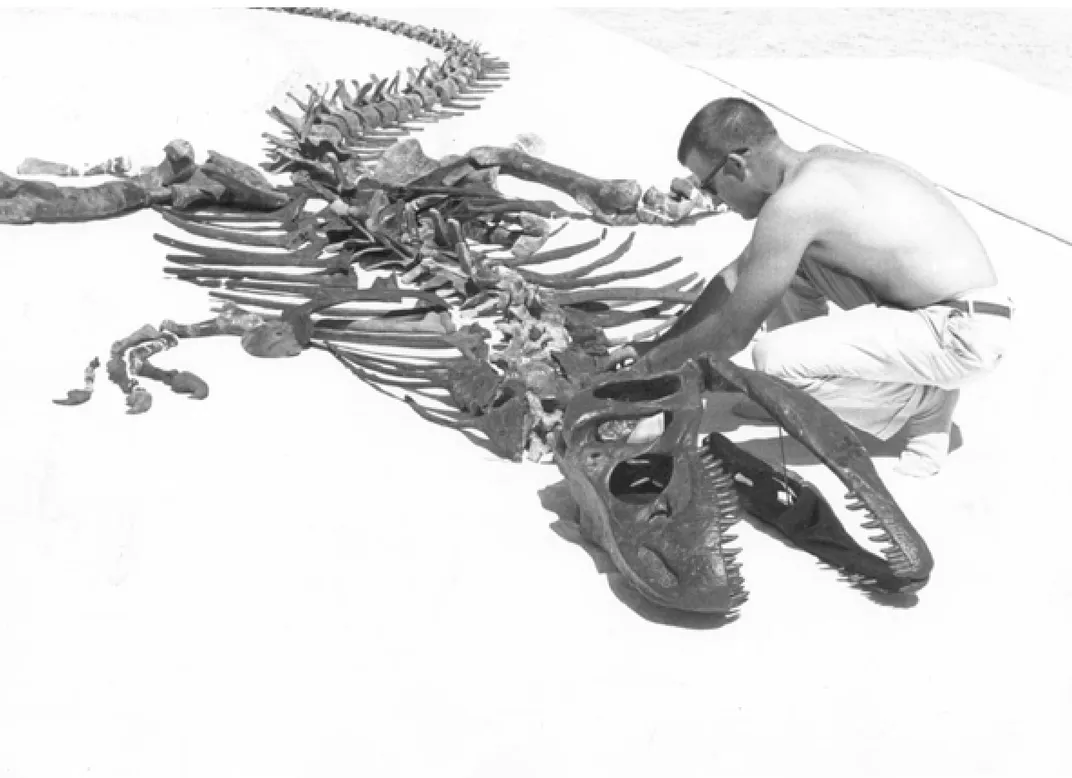Newly Described Meat-Eating Dinosaur Dominated During the Jurassic Period
The new species is the oldest Allosaurus described yet and was a top predator of its time
/https://tf-cmsv2-smithsonianmag-media.s3.amazonaws.com/filer/c4/25/c42582e5-40be-43f7-865d-edb356a91e0d/allosaurus_jimmadseni-gray-credit-andrey-atuchin.jpg)
About about 145 million to 200 million years ago during the Jurassic Period, Earth’s creatures had to contend with one of the most powerful, ferocious predators that ever lived—a clawed, flesh-eating, sharp-toothed behemoth of a dinosaur that stalked the floodplains of what would become Western North America.
Despite what Hollywood might have you think, we’re not talking about Tyrannosaurus rex, which wouldn’t appear until the Cretaceous, the period immediately following the Jurassic. But as researchers reported last week in the journal PeerJ, a newly-described species called Allosaurus jimmadseni, which lived some 70 million years before its more famous carnivorous cousin, certainly made for a worthy opening act. A. jimmadseni roamed the North American continent between 152 million years ago and 157 million years ago, making it the oldest species of Allosaurus discovered so far, reports George Dvorsky for Gizmodo.

Like other members of the Allosaurus genus, A. jimmadseni boasted a suite of truly terrifying features. Study co-authors Mark Loewen, a paleontologist at the Natural History Museum of Utah, and Daniel Chure, a paleontologist at the Dinosaur National Monument in Utah, estimate that A. jimmadseni weighed up to 4,000 pounds and reached 26 to 29 feet in length at full size. This dino stomped around on two, three-toed feet and hunted prey with its long, curved claws and about 80 serrated teeth. (For perspective, the later-arriving T. rex maxed out closer to 40 feet in length and 20,000 pounds in weight.) This deadly combo probably equipped Allosaurus to take down their fair share of hefty creatures, including, perhaps, the spiky-tailed Stegosaurus.
Assigning specimens to the Allosaurus family tree has long been a point of contention in the field, according to a statement. While some have argued that as many as 12 separate species exist, the new study recognizes only two—A. jimmadseni and A. fragilis, which evolved some 5 million years later. Both were top predators in their respective ecosystems and represent some of the best-known dinosaurs in paleontology. But the older A. jimmadseni had a weaker skull that probably slightly weakened its ability to hunt, Loewen tells Courtney Linder at Popular Mechanics. So when A. fragilis showed up, he explains, it probably outcompeted its predecessor.

To ensure they’d actually come across a new species, analyzed more than 20,000 Allosaurus bones, gathered from all around the world, including those from two nearly complete specimens, including one nicknamed “Big Al” housed at the Museum of the Rockies in Montana. Originally designated as A. fragilis, Big Al, as well as a second Allosaurus dubbed “Big Al Two,” have now been reassigned as A. jimmadseni, a name the team chose to honor late Utah State Paleontologist James Madsen, Jr.
“Everybody knows Allosaurus, or thinks they know Allosaurus,” says Steve Brusatte, a paleontologist at the University of Edinburgh who wasn’t involved in the study. “But here we are, nearly 150 years after the first Allosaurus bones were found, and after dozens and dozens of skeletons have been collected, and it turns out there is another species…. There are many more dinosaurs out there to find.”

/https://tf-cmsv2-smithsonianmag-media.s3.amazonaws.com/accounts/headshot/10172852_10152012979290896_320129237_n.jpg)
/https://tf-cmsv2-smithsonianmag-media.s3.amazonaws.com/accounts/headshot/10172852_10152012979290896_320129237_n.jpg)